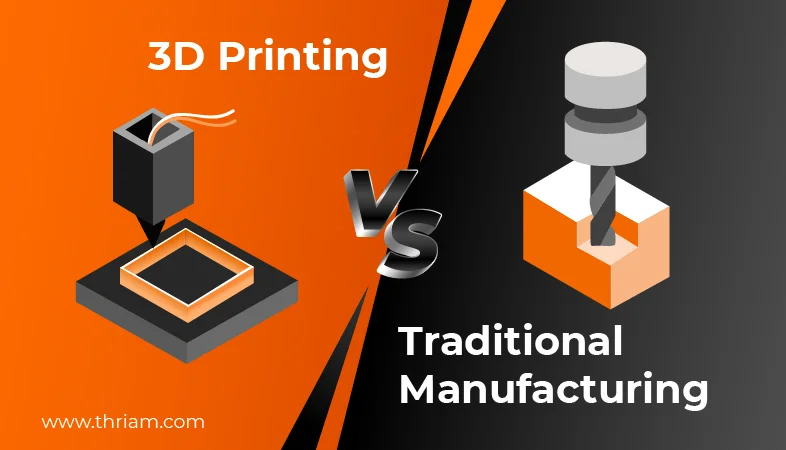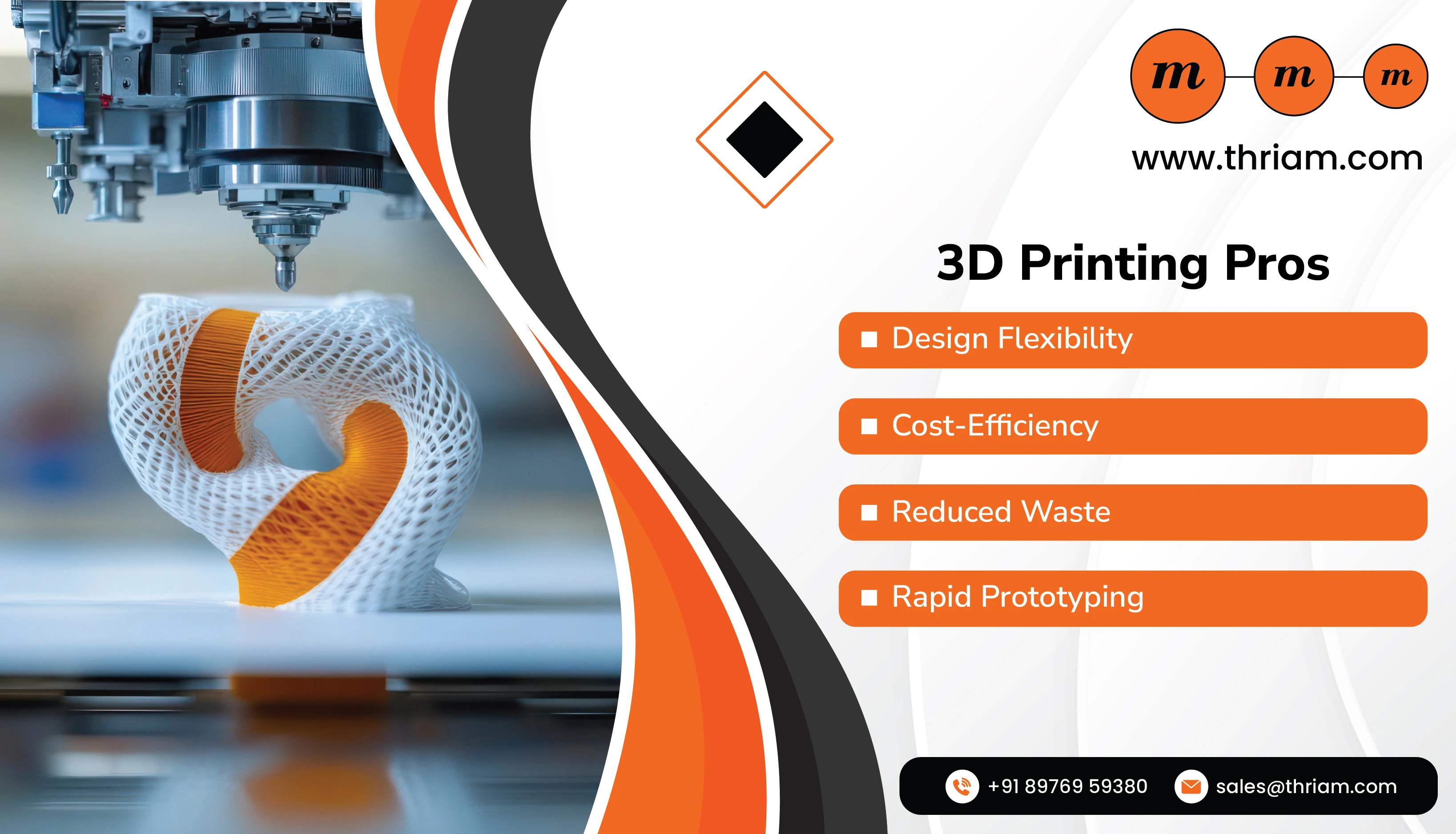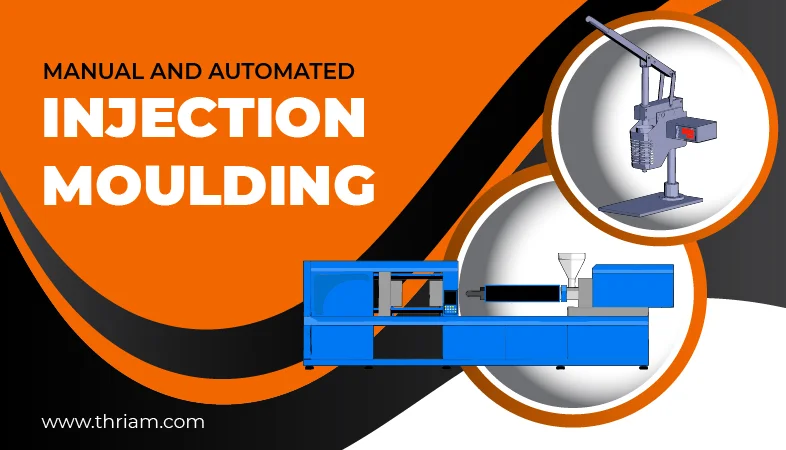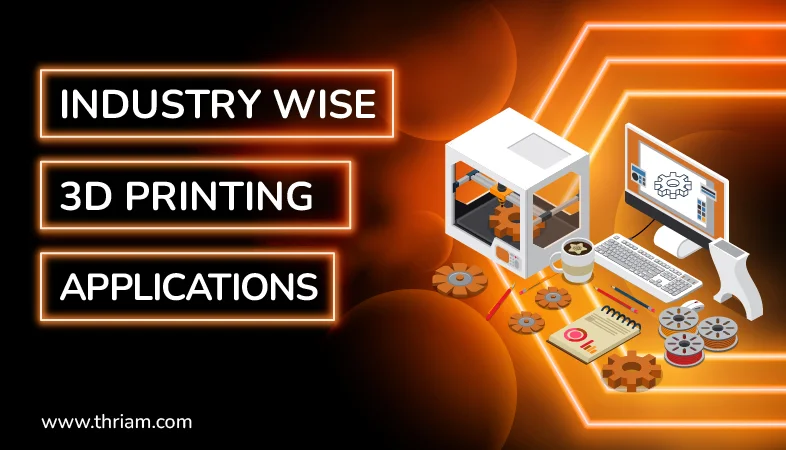Decoding the Manufacturing Dilemma: 3D Printing vs Traditional Manufacturing

Introduction
3D printing and traditional manufacturing represent two distinct approaches to production, each with its own set of advantages and limitations. In this blog post, we will delve into the world of manufacturing and take a closer look at 3D printing and traditional manufacturing, analyzing the pros and cons of each method. By understanding these differences, we can gain valuable insights into which manufacturing approach is best suited for different applications and industries. Advancements in technology have revolutionized the manufacturing industry, giving rise to innovative methods like 3D printing. With its ability to build complex objects layer by layer, 3D printing has challenged traditional manufacturing methods. In this blog, we will examine the pros and cons of 3D printing and traditional manufacturing, providing insights into their respective strengths and weaknesses.
3D Printing Pros:

Design Flexibility:
One of the most significant advantages of 3D printing is its unparalleled design flexibility. It enables the creation of intricate and complex designs with ease. This flexibility is especially beneficial in fields like architecture, product design, and aerospace, where unique and customized components are required.
Cost-Efficiency:
3D printing eliminates the need for expensive tooling and molds, which are typically employed in traditional manufacturing methods. As a result, it offers cost savings, especially for small-scale production runs. Additionally, the ability to print on-demand reduces inventory costs, making it an efficient manufacturing solution.
Reduced Waste:
Unlike traditional manufacturing techniques, 3D printing builds objects layer by layer, using only the necessary materials. This approach significantly minimizes material waste, making 3D printing eco-friendly and economically viable. It also allows for the recycling and reusing of materials, further reducing waste.
Rapid Prototyping:
With 3D printing, the turnaround time for prototyping is dramatically reduced. It allows designers and engineers to quickly iterate and refine their designs, speeding up the product development process. This speed advantage plays a crucial role in industries where time-to-market is critical.
Cons of 3D Printing:
Limited Material Choices:
While the range of printable materials has expanded, it still does not match the variety available in traditional manufacturing. Traditional methods offer options like metals, ceramics, and different grades of plastics, which may be necessary for specific applications. This limitation restricts the suitability of 3D printing for certain projects.
Slower Production Speed:
3D printing can be time-consuming, especially for large-scale production. The layer-by-layer process requires more time compared to traditional manufacturing techniques, such as injection molding or CNC machining. Consequently, the production speed of 3D printing may not be suitable for projects that demand high volumes in short timeframes.
Quality Control Challenges:
Achieving consistent quality in 3D printing can be demanding. Factors like layer adhesion, print resolution, and machine calibration need careful monitoring to ensure optimal results. Variations in these parameters can affect the final product's quality, making quality control a critical aspect of 3D printing.
Limitations in Size and Scale:
3D printing has certain limitations when it comes to the size and scale of objects. The build volume of 3D printers restricts the maximum size of the objects that can be printed. It may not be feasible to produce large-scale components solely through 3D printing, requiring alternative manufacturing methods for such applications.
Traditional Manufacturing Pros:
Material Variety and Versatility:
Traditional manufacturing methods offer a wide array of materials, including metals, ceramics, and various grades of plastics. This versatility allows for specialized applications that might require specific material properties. In contrast, 3D printing, while expanding its range of materials, still lags behind in comparison.
Faster Production Rates:
Traditional manufacturing techniques, such as injection molding and CNC machining, excel in terms of production speed. These methods enable the creation of high volumes of products in relatively shorter timeframes. This advantage makes traditional manufacturing preferable for projects with demands for rapid scalability.
Established Quality Control:
Years of refinement and continuous improvement have perfected the quality control processes in traditional manufacturing. Consistent standards and proven techniques ensure reliability and produce high-quality products. By contrast, ensuring consistent quality in 3D printing requires more attention to factors like layer adhesion and machine calibration.
Smoother Surface Finishes and Higher Tolerances:
Traditional manufacturing methods often yield smoother surface finishes and tighter tolerances. These characteristics can be critical for applications where precise geometry or fine details are necessary, such as medical devices or aerospace components. 3D printing, though continually improving, might still struggle to match these standards.
Traditional Manufacturing Cons:
High Setup Costs:
Traditional manufacturing typically involves upfront costs for tooling, molds, and other equipment. These costs can be substantial, making it less economically viable for small-scale production or prototyping phases. In contrast, 3D printing eliminates much of the need for expensive tooling, reducing initial setup expenses.
Limited Design Complexity:
The constraints of traditional manufacturing methods often limit the design complexity that can be achieved. Intricate and complex designs might pose challenges in terms of manufacturability. Conversely, 3D printing excels in producing intricate designs and customized components, allowing for more design freedom.
Environmental Impact:
Traditional manufacturing processes often produce higher levels of waste, both in terms of material and energy consumption. Mass production and batch production practices generate significant amounts of waste, contributing to environmental concerns. 3D printing, being additive in nature, minimizes waste by using only the necessary materials, making it environmentally more sustainable.
Inventory Storage and Longer Lead Times:
Traditional manufacturing tends to create batches of products, leading to the need for storage space and longer lead times. This demand for larger inventory storage and management can be cumbersome for businesses, particularly in dynamic markets. On the other hand, 3D printing enables on-demand production, reducing the need for excessive inventory management.
Conclusion
Both 3D printing and traditional manufacturing possess their own advantages and drawbacks. While 3D printing excels in design flexibility, cost-efficiency, and reduced waste, traditional manufacturing offers a broader material range, faster production speeds, and established quality control processes. The choice between these methods depends on factors such as the specific requirements of the project, desired production volume, and cost considerations. As technology progresses, a hybrid approach that combines the strengths of both methods may emerge, further transforming the manufacturing landscape in the future.



